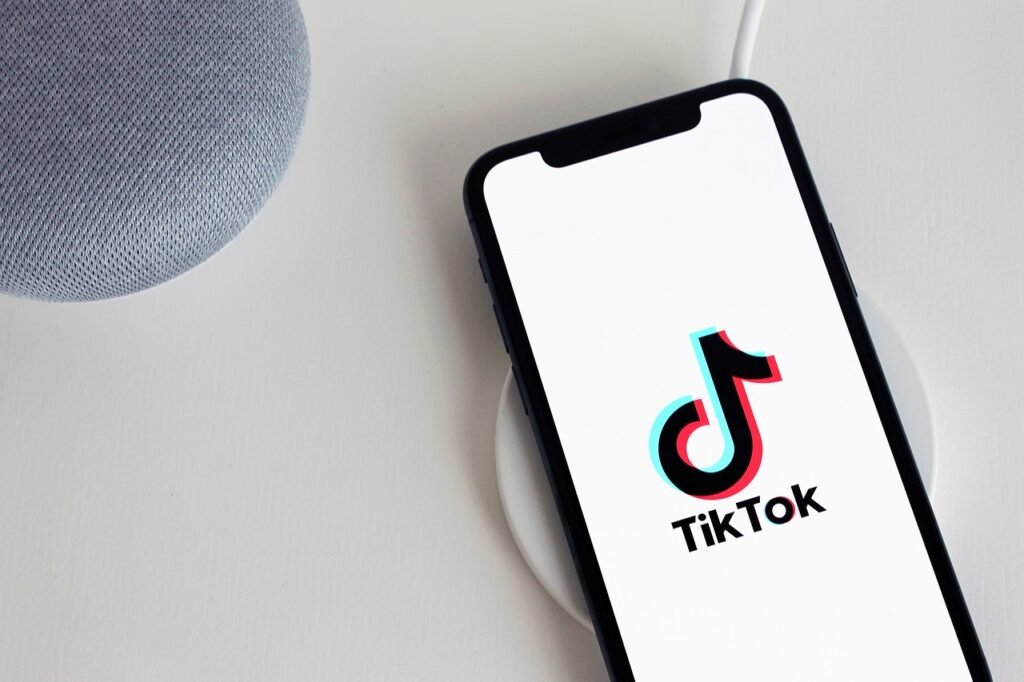Social media is a powerful tool for nonprofits to reach a wider audience, engage supporters, and amplify their mission. However, creating an effective social media strategy can be challenging, especially with limited resources. This article will provide detailed, actionable tips and ideas to help nonprofits harness the full potential of social media.
Understanding Your Audience

Know Who You’re Talking To
The first step in creating an effective social media strategy is understanding your audience. Who are they? What are their interests, needs, and pain points? Knowing your audience helps you tailor your content to resonate with them. Start by analyzing your current supporters. Look at demographic data such as age, gender, location, and interests. Use this information to create detailed audience personas.
For example, if your nonprofit focuses on environmental conservation, your audience might include young adults who are passionate about sustainability. Understanding this helps you create content that speaks directly to their interests and concerns.
Engaging with Your Community
Engagement is key to building a strong community on social media. Respond to comments, answer questions, and acknowledge your supporters. Show that you value their input and appreciate their support. This not only builds loyalty but also encourages more interaction.
For instance, if someone comments on your post about a recent environmental cleanup event, reply with a thank you and ask if they participated or plan to join future events. This kind of engagement makes your audience feel valued and part of the cause.
Using Analytics to Refine Your Strategy
Social media platforms offer robust analytics tools that provide insights into your audience’s behavior. Use these tools to track which types of content get the most engagement. Pay attention to metrics like likes, shares, comments, and click-through rates. This data helps you understand what works and what doesn’t, allowing you to refine your strategy for better results.
For example, if you notice that posts with infographics about recycling tips get more engagement than other types of posts, you can focus on creating more of that content.
Creating Compelling Content
Storytelling to Connect
Storytelling is a powerful tool for nonprofits. Sharing real stories about the people or causes you support can make a significant impact. Stories evoke emotions and make your mission more relatable. Highlight individual stories, success cases, and testimonials.
For example, share the journey of someone who benefited from your services. Use their story to illustrate the broader impact of your work. This not only humanizes your cause but also inspires others to support it.
Using Visual Content
Visual content is more engaging and shareable than text alone. Use high-quality images, videos, and infographics to tell your story. Visuals can quickly convey emotions and information, making your posts more compelling.
For instance, create a video showcasing a recent event, or share an infographic that highlights key statistics about your impact. Tools like Canva can help you create professional-looking graphics without needing a design background.
Content Calendar
Planning is essential for maintaining a consistent social media presence. Create a content calendar to organize your posts in advance. This ensures that you have a steady stream of content and can strategically plan around key dates and events.
Include a mix of content types in your calendar, such as stories, updates, educational posts, and calls to action. This variety keeps your audience engaged and informed.
Engaging Calls to Action
Each post should have a clear call to action (CTA). Whether it’s asking people to donate, volunteer, share your post, or sign up for your newsletter, make sure the CTA is clear and compelling.
For example, after sharing a story about a beneficiary, include a CTA like, “Help us support more individuals like [name] by donating today. Click the link in our bio to contribute.” This direct and emotional appeal encourages immediate action.
Leveraging Different Platforms
Choosing the Right Platforms
Not all social media platforms are created equal. Choose the ones that best fit your audience and goals. Facebook is great for reaching a broad audience and creating detailed posts. Instagram is ideal for visual storytelling. Twitter is useful for quick updates and engaging with trending topics. LinkedIn is perfect for networking with professionals and sharing detailed articles.
Platform-Specific Strategies
Tailor your content strategy to each platform. On Facebook, create detailed posts with images and links. Use Facebook Groups to build a community around your cause. On Instagram, focus on high-quality images and stories. Use Instagram Stories and Reels for behind-the-scenes content and quick updates.
For example, use Instagram Stories to share a day in the life of one of your volunteers. This gives followers an inside look at your operations and highlights the impact of their contributions.
Cross-Promotion
Promote your social media accounts across different platforms to increase your reach. Include social media icons and links in your email signatures, newsletters, and website. Encourage your supporters to follow you on multiple platforms.
For instance, after posting a new video on YouTube, share the link on Facebook, Instagram, and Twitter. This not only drives traffic to your video but also increases engagement across your social media channels.
Utilizing Facebook Groups
Facebook Groups are a valuable tool for nonprofits to create a sense of community and foster deeper engagement. Create a dedicated group for your supporters where they can share ideas, ask questions, and get updates directly from your organization. This space can be used for discussions, exclusive content, and event planning.
For example, if your nonprofit focuses on mental health, create a Facebook Group where members can share their experiences, access resources, and support each other. Regularly post discussion topics, host live Q&A sessions, and provide updates on your initiatives.
Maximizing Instagram’s Features
Instagram offers a variety of features that can enhance your storytelling and engagement efforts. Use IGTV for long-form video content, such as in-depth interviews, documentaries, or detailed project updates. Utilize Instagram Stories for quick, engaging content like event highlights, volunteer spotlights, and day-in-the-life segments.
Reels can be used to create short, catchy videos that capture attention and promote your campaigns. For instance, create a Reel showing the impact of your recent fundraising event or a behind-the-scenes look at your team preparing for an upcoming project.
Engaging on Twitter
Twitter’s fast-paced environment is perfect for real-time updates and engaging with current events. Use Twitter to share news about your organization, live-tweet events, and join trending conversations relevant to your cause. Engage with other users by retweeting their posts, replying to comments, and participating in Twitter chats.
For example, if there’s a trending hashtag related to your cause, join the conversation by sharing relevant content and using the hashtag. This can increase your visibility and connect you with like-minded individuals and organizations.
Leveraging LinkedIn for Professional Networking
LinkedIn is an excellent platform for connecting with professionals, potential donors, and corporate partners. Share detailed articles, thought leadership pieces, and success stories to highlight your organization’s impact. Use LinkedIn’s networking features to connect with industry leaders, potential board members, and corporate sponsors.
For example, publish an article on LinkedIn discussing the outcomes of a recent project and the importance of your cause. Tag relevant individuals and organizations to increase visibility and encourage shares.
Utilizing YouTube for Video Content
YouTube is a powerful platform for hosting and sharing video content. Create a YouTube channel for your nonprofit where you can upload videos about your projects, events, and impact stories. Optimize your videos with relevant keywords, descriptions, and tags to increase discoverability.
For example, create a video series that takes viewers on a virtual tour of your facilities, showcases testimonials from beneficiaries, or provides in-depth looks at your projects. Promote your YouTube content across other social media platforms to drive traffic and engagement.
Engaging with Pinterest
Pinterest can be a valuable platform for nonprofits, especially those with a strong visual component. Create boards that highlight different aspects of your work, such as success stories, project updates, volunteer opportunities, and educational content. Use high-quality images and detailed descriptions to attract followers and drive traffic to your website.
For example, if your nonprofit focuses on education, create boards that feature educational resources, classroom activities, and success stories from students. Pin your blog posts, infographics, and event updates to drive traffic back to your website.
Exploring TikTok for Creative Campaigns
TikTok’s popularity among younger audiences makes it an excellent platform for creative and engaging campaigns. Use TikTok to create short, impactful videos that highlight your cause, share success stories, and promote upcoming events. Participate in popular challenges and trends to increase visibility and engagement.
For example, create a TikTok challenge encouraging followers to share a video of themselves supporting your cause, using a specific hashtag. This can increase awareness and encourage user-generated content that promotes your organization.
Consistent Branding Across Platforms
Maintain a consistent brand identity across all social media platforms. Use the same profile picture, cover photo, and bio to ensure that your organization is easily recognizable. Consistent branding reinforces your identity and makes it easier for followers to find and engage with you across different platforms.
For example, if your organization’s logo is prominently featured on your Facebook profile, ensure it’s also on your Instagram, Twitter, LinkedIn, and YouTube profiles. Consistent branding builds trust and makes your online presence cohesive.
Measuring Success and Adjusting Strategies
Regularly measure the success of your social media efforts using analytics tools. Track metrics such as engagement rates, follower growth, website traffic, and conversions to understand what’s working and where there’s room for improvement. Use these insights to adjust your strategies and optimize your content for better results.
For example, if you notice that video content on Instagram receives higher engagement than other types of posts, consider creating more videos and leveraging IGTV and Reels. Continuously refining your approach based on data ensures that your social media strategies remain effective and impactful.
Engaging with Your Audience
Responding to Comments and Messages
Active engagement with your audience is crucial for building a strong online community. Respond to comments and messages promptly. Acknowledge compliments, answer questions, and address concerns. This shows that you value your supporters and are attentive to their needs.
For example, if someone comments on a post about your latest fundraising campaign asking how they can contribute, respond with detailed instructions and a link to the donation page. Personalized responses make your followers feel appreciated and more connected to your cause.
Hosting Live Events
Live events on social media platforms like Facebook, Instagram, and YouTube can drive real-time engagement. Host Q&A sessions, live tours of your facilities, or behind-the-scenes looks at events. Live events create a sense of immediacy and allow for direct interaction with your audience.
For instance, schedule a live session with your organization’s founder to discuss the impact of recent projects and answer questions from followers. Promote the event ahead of time to ensure a good turnout and encourage viewers to share the live stream with their networks.
Creating Interactive Content
Interactive content such as polls, quizzes, and challenges can boost engagement. These types of posts invite participation and can make your social media presence more dynamic.
For example, create a poll asking your audience which project they’d like to see updates on next, or run a quiz related to your cause. Challenges, like asking followers to share a photo of themselves doing something related to your mission with a specific hashtag, can also drive participation and spread awareness.
Building a Strong Community
Creating a strong community around your nonprofit involves more than just responding to comments. Develop a strategy to actively build and nurture your community. Start by creating a private Facebook Group or an exclusive LinkedIn group where supporters can interact, share experiences, and stay updated on your activities.
For example, if your nonprofit focuses on environmental conservation, create a group where members can discuss sustainability practices, share tips, and post about local environmental issues. Regularly participate in these discussions to maintain a presence and foster a sense of community.
Utilizing User Feedback
Use feedback from your audience to improve your social media strategy and operations. Regularly ask for feedback through surveys, polls, or direct questions in your posts. This not only engages your audience but also provides valuable insights into their preferences and expectations.
For example, after hosting a virtual event, create a poll asking attendees what they enjoyed most and what could be improved. Use this feedback to refine your future events and social media content.
Showcasing Volunteer and Donor Spotlights
Highlighting the efforts of your volunteers and donors can make your audience feel appreciated and more connected to your cause. Regularly feature stories, interviews, or shout-outs to those who have made significant contributions. This not only acknowledges their efforts but also encourages others to get involved.
For example, create a weekly “Volunteer Spotlight” post where you share a photo and a brief story about a volunteer’s experience and contributions. Tag them in the post and thank them publicly. This recognition can inspire more people to volunteer and support your nonprofit.
Leveraging Testimonials and Success Stories
Sharing testimonials and success stories from beneficiaries can be a powerful way to engage your audience. These stories provide real-life examples of the impact your organization has on individuals and communities. Use quotes, photos, and videos to make these stories compelling and relatable.
For instance, share a video testimonial from someone who benefited from your services, explaining how your organization helped them overcome a challenge. These personal stories can evoke emotions and inspire your audience to support your cause.
Implementing Social Listening
Social listening involves monitoring social media channels for mentions of your organization, related keywords, and industry trends. This allows you to understand what people are saying about your nonprofit, identify opportunities for engagement, and respond to potential issues quickly.
For example, set up alerts for mentions of your nonprofit’s name and related hashtags. When someone mentions your organization, respond promptly to thank them, address their comments, or engage in the conversation. This proactive approach helps you stay connected with your audience and maintain a positive online presence.
Hosting Virtual Meetups
Virtual meetups can be an effective way to engage with your audience on a more personal level. Organize regular virtual gatherings where supporters can meet your team, learn more about your work, and connect with each other. These meetups can include guest speakers, interactive activities, and Q&A sessions.
For example, host a monthly virtual coffee chat where your team shares updates on ongoing projects and answers questions from supporters. Promote these events on your social media platforms and encourage followers to join and participate.
Encouraging Peer-to-Peer Fundraising
Peer-to-peer fundraising leverages your supporters’ networks to raise funds for your organization. Encourage your followers to create their own fundraising pages and share them with their friends and family. Provide them with the tools and resources they need to be successful, such as templates, graphics, and messaging guidelines.
For example, create a toolkit for peer-to-peer fundraisers that includes step-by-step instructions, sample social media posts, and branded graphics. Recognize and celebrate their efforts on your social media channels to motivate others to participate.
Creating Themed Content Series
Develop themed content series that align with your nonprofit’s mission and engage your audience over time. These series can include educational posts, behind-the-scenes looks, interviews, and success stories. Promote the series in advance to build anticipation and encourage consistent engagement.
For example, if your nonprofit focuses on literacy, create a weekly “Reading Corner” series where you share book recommendations, literacy tips, and interviews with authors or educators. Use consistent branding and hashtags to create a cohesive and recognizable series.

Collaborating with Influencers
Identifying the Right Influencers
Partnering with influencers can expand your reach and add credibility to your cause. Look for influencers who are genuinely passionate about your mission and have a follower base that aligns with your target audience.
For example, if your nonprofit focuses on animal welfare, collaborate with pet influencers or animal rights activists. Their endorsement can introduce your organization to a wider audience and inspire their followers to support your cause.
Planning Collaborative Campaigns
Work with influencers to create meaningful campaigns. This could include guest posts, co-hosted events, or social media takeovers. Clearly outline the goals of the campaign and the role of the influencer to ensure alignment and success.
For instance, ask an influencer to take over your Instagram account for a day to share their experiences and insights related to your cause. This provides fresh content for your followers and leverages the influencer’s reach and credibility.
Measuring the Impact
After a collaborative campaign, measure its impact to understand its effectiveness. Look at metrics such as follower growth, engagement rates, and donations or sign-ups generated through the campaign. Use these insights to refine your strategy for future collaborations.
For example, if a particular influencer campaign results in a significant increase in donations, consider extending the partnership or replicating the campaign with other influencers.
Utilizing User-Generated Content

Encouraging Submissions
User-generated content (UGC) can be a powerful tool for nonprofits. Encourage your supporters to share their own photos, stories, and experiences related to your cause. Create specific hashtags to organize and track these submissions.
For example, launch a campaign asking followers to share photos of themselves participating in a recent event or supporting your cause in their daily lives. Promote a hashtag like #SupportOurCause and feature the best submissions on your profile.
Highlighting Community Stories
Regularly feature user-generated content on your social media profiles. Highlighting community stories not only provides you with authentic content but also makes your supporters feel valued and recognized.
For instance, share a story from a volunteer about their experience working with your organization. Tag them and thank them publicly. This recognition can motivate others to share their stories and get involved.
Running Contests and Challenges
Contests and challenges that involve user-generated content can drive engagement and participation. Offer incentives like merchandise, event tickets, or shoutouts for the best submissions.
For example, run a photo contest where participants submit pictures related to a theme connected to your mission. Offer a prize for the best photo and feature the top entries on your social media profiles. This not only generates content but also increases awareness and engagement.
Creating a UGC Campaign Strategy
For a successful user-generated content campaign, develop a clear strategy outlining your goals, target audience, and content guidelines. Define what types of content you want to collect and how you will use it. Communicate these guidelines clearly to your audience to ensure the content aligns with your brand’s values and mission.
For example, if your nonprofit focuses on community health, your UGC campaign might encourage supporters to share stories or photos of healthy living practices. Provide examples and tips to guide their submissions and ensure they know how their contributions will be used.
Leveraging UGC for Storytelling
User-generated content can enhance your storytelling efforts by adding authentic voices and perspectives. Use UGC to highlight personal stories that showcase the impact of your work. These stories can be featured in blog posts, social media updates, newsletters, and even fundraising campaigns.
For instance, create a series of posts that tell the stories of different individuals or families who have benefited from your programs. Use their own words and photos to create a compelling narrative that resonates with your audience.
Building Trust and Credibility
Featuring user-generated content can build trust and credibility for your nonprofit. When potential supporters see real people sharing their experiences, they are more likely to trust your organization and feel inspired to get involved. Ensure that the content is genuine and reflects the positive impact of your work.
For example, share testimonials from volunteers and beneficiaries who describe how your organization has made a difference in their lives. Highlight their stories on your website and social media to build a credible and trustworthy image.
Encouraging Long-Term Engagement
Encourage ongoing engagement by regularly inviting your audience to contribute content. Create a sense of community by frequently acknowledging and featuring their contributions. This continuous interaction fosters a deeper connection between your supporters and your organization.
For example, set up a monthly theme or challenge where followers can share their stories or photos related to specific aspects of your mission. Consistently feature the best submissions and celebrate the contributions of your supporters.
Showcasing Events and Activities
User-generated content is especially valuable for showcasing events and activities. Encourage attendees to share their photos and experiences during and after your events. This not only provides real-time content but also extends the reach and impact of your events.
For instance, during a fundraising event, ask participants to share their photos with a dedicated event hashtag. After the event, compile the best photos into a highlight reel or an album to share on your social media profiles. This approach keeps the excitement alive and engages your audience even after the event is over.
Incorporating UGC in Fundraising Campaigns
Integrate user-generated content into your fundraising campaigns to make them more relatable and impactful. Use stories, photos, and testimonials from real supporters to highlight the need for donations and the difference they can make.
For example, create a campaign where you share daily stories of individuals who have been helped by your organization. Include their photos and quotes about how the donations have impacted their lives. This personal touch can inspire more people to contribute to your cause.
Measuring the Impact of UGC
Track the performance of your user-generated content campaigns to measure their impact and effectiveness. Use analytics tools to monitor engagement metrics such as likes, shares, comments, and reach. Analyze this data to understand what types of UGC resonate most with your audience and how it contributes to your overall goals.
For example, if a particular type of UGC, like volunteer stories, receives higher engagement, consider focusing more on that type of content in future campaigns. Use these insights to continuously improve your UGC strategy and maximize its impact.
Conclusion
Engaging with your audience on social media is essential for building a strong, supportive community around your nonprofit. By responding to comments and messages, hosting live events, creating interactive content, and leveraging user-generated content, you can foster a deeper connection with your supporters. Utilize these strategies to showcase your mission, highlight your impact, and inspire more people to join your cause.
Building a strong community involves consistent effort and a strategic approach. Regularly analyze your engagement metrics, listen to feedback, and adjust your strategies to meet the evolving needs of your audience. With the right tactics, you can transform your social media presence into a powerful tool for advocacy, fundraising, and community building.
Read Next:
- Email Marketing for Events and Webinars: Boosting Attendance and Engagement
- The Role of Mobile Optimization in Email Marketing Success
- Harnessing the Power of Interactive Content in Email Campaigns
- The Future of Email Marketing: Predictions and Trends to Watch
- Segmentation in Email Marketing: Targeting the Right Audience with the Right Message
- The Power of A/B Testing in Email Marketing: Making Data-Driven Decisions






















Comments are closed.